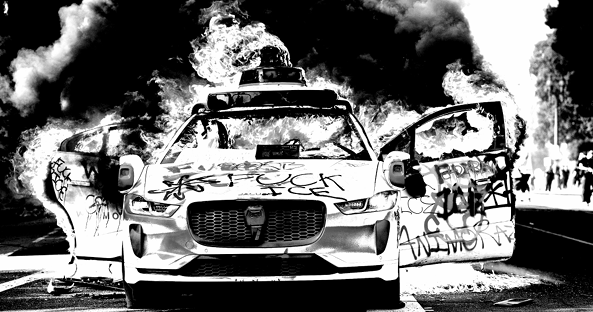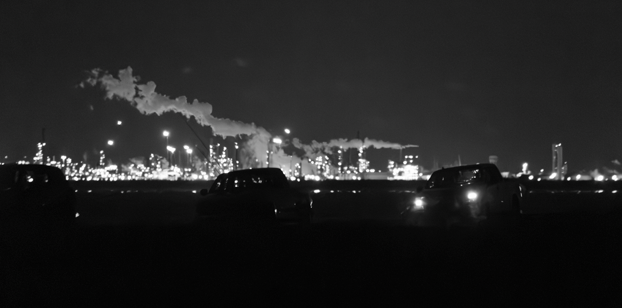Anti-copyright 2025, no rights reserved. Images were either used by permission from friends or stolen from the internet. This zine is free to be stolen, altered, and reprinted by anybody who would find use from it.
Written by Prairie Dawn, with help from its lovely friends and co-conspirators.
If you travel to the undeveloped parts of coastal Texas around Harris County, down to the base of mima mounds in the prairie, you’ll find the Texas Prairie Dawn. It’s a small, unassuming, unremarkable yellow flower that blooms for a short period in the spring before our searing summer sun kills it and dries out our prairies. You could pass right by it and miss it unless you’re looking for it, and you can live in Houston your entire life and miss the habitat and the entire world it belongs in.
The coastal prairie was once a vast, diverse ecosystem that stretched from the Rio Grande Valley to central Louisiana. Hundreds of years ago, tallgrasses that grew as high as your shoulders provided grazing land for buffalo traveling from as far north as Canada. The land was a crucial rest stop for migratory birds making the journey from the Canadian tundra to the Gulf of Mexico. The roots of grasses, some of which would go up to 12 feet deep, would break up the rock-hard clay and allow water to seep in. The hurricanes and floods we deal with every year in the gulf coast could be soaked up in the soil and fuel wetlands that acted as diverse oases, instead of flowing down concrete and sweeping lives away with it. The air was filled with the fragrance of countless wildflowers, the calls of hundreds of bird species, and the chirp of frogs and insects.
For thousands of years, a core part of this landscape were indigenous
nations like the Karankawa, Ishak, and Coahuiltican who primarily lived
through hunting, gathering, and fishing, and migrated throughout the region depending on the seasons and the presence of animals. They were active participants in shaping the land through prescribed burns to ensure the maintenance of the prairie, building shell mounds, and encouraging growth of crucial plant species, including medicines that are now increasingly rare or extinct. Fire was their biggest tool to alter the landscape before colonizers took their land, restricted their lifestyles, and harnessed the fire for the new steam engines cutting across the prairie. The coastal prairie was never a landscape that existed outside of humans, but because of human intervention and maintenance that allowed it to be a home for people for thousands of years.
In 250 years of colonization, the Gulf Coast has become an
unrecognizable wasteland, with bayous turning brown and devoid of life, and the land turning into a prairie of lifeless bermuda grass lawns and a forest of concrete. The few pockets of coastal prairie left around Houston provide a limited glimpse into what once was and what could have been, but even those remnants of prairie are isolated and scarred by colonialism and development. The hundreds of species that used to spread out and roam over tens of thousands of square miles of land can’t be sustained on tiny islands of prairie cut off by vast seas of concrete, corn, and cattle.
The coastal prairie that the prairie dawn is a part of is almost completely
destroyed, outside of a few maintained pockets and a handful of undeveloped fields. Our industrial settler society has decided that an ecosystem that can sustain its population for thousands of years, weather hurricanes, and be home to countless species is less valuable than the short-term returns of cattle ranches and petrochemical companies. An ecosystem that used to stretch south to the Coastal Bend and east to Louisiana now has less than 1% of it remaining, with more of it being encroached on every year. In its place, we have ranch land with brown, patchy grass, endless cities of refineries with their multicolored peaks stretching into the sky, and a never ending suburban sprawl that is never satisfied in its consumption of the prairie. The existence of the coastal prairie is alien to those who live in Houston.
This isn’t a call to go back, to reverse to some idyllic past. The past has
been paved over to build McMansions for oil executives. If you were unaware of what a mima mound is, that’s because they practically don’t exist any more along the coast. The coastal prairie wasn’t uniform and endlessly flat like our landscape now. The prairie’s immense diversity was facilitated by subtle changes in elevation. Low areas of wetlands and salt flats would serve as watering holes and home to more aquatic life, while small humps in the landscape called mima mounds allowed species that needed to be a little less damp to thrive.
The prairie dawn existed in this world of variety and diversity, a
world that was inconvenient for settlers and developers. The wetlands and
mima mounds were flattened in order to allow for more effective farming and ranching, and later on for urban and suburban development. Once the prairie is flattened, there’s little we can do to go back. Effort to excavate land to imitate these pimples and dimples is costly, intensive, and not work that many are bothering doing. Any effort to restore prairie that’s been flattened will be restoring a facsimile of what this land looked like before colonization and industrialization. If you drive out to the outskirts of Houston, more and more land is being developed and swallowed up by the cancerous demand for new sprawl. Conservation and restoration efforts are a drop in the bucket compared to the exponential demands of Capital.
If the damage has been done to the coastal prairie and truly going back
is impossible, then the only way left is forward. In order to look to the future, though, we have to look back to the cycles of the prairie and how it was maintained for thousands of years by indigenous nations like the Karankawa, Ishak, and Coahuiltican. Indigenous people would regularly start prescribed burns. Prairies need fire to continue. Without regular fires, woody shrubs and trees end up choking out the grasses, and the diversity of the prairie vanishes. The prairie needs these regular cycles of death, destruction, and rebirth to survive. Once colonizers from Spain, and later from the United States, came, these indigenous nations were genocided, forced onto reservations or to assimilate, and were cut off from their identities and land management practices.
The fire, however, has never left the prairie. The fire only changed
forms. Now, the fire bellows from the top of smoke stacks powering our
homes. It spews from refineries that give communities cancer, asthma, and
untold other diseases. It’s contained in the cars we’re forced to drive around on roads that make deep scars into the prairie. Fire has been a tool to cause an end to the prairie, and it’s time we use it to end the current society we live in.
Once we set fire to the bulldozers, excavators, and construction
equipment that pave over the rest of the prairie, we can get to work on
conserving what’s left. Once we set fire to the factories, to the ranches, to the refineries, and to every other institution that’s polluting our water, air, and prairie, we can breathe deep and smell the wildflowers and ash. Once we set fire to the prisons, banks, police stations, and walmarts, we can see what new world sprouts in its place. As we dance through the night on the ashes of the ranches and factories that poisoned this land, the sun will rise on a new prairie dawn. The prairie is not a land where you can construct some grand vision from the top down and expect it to go as planned. All you can do is let the fire burn and learn how to live alongside it.

